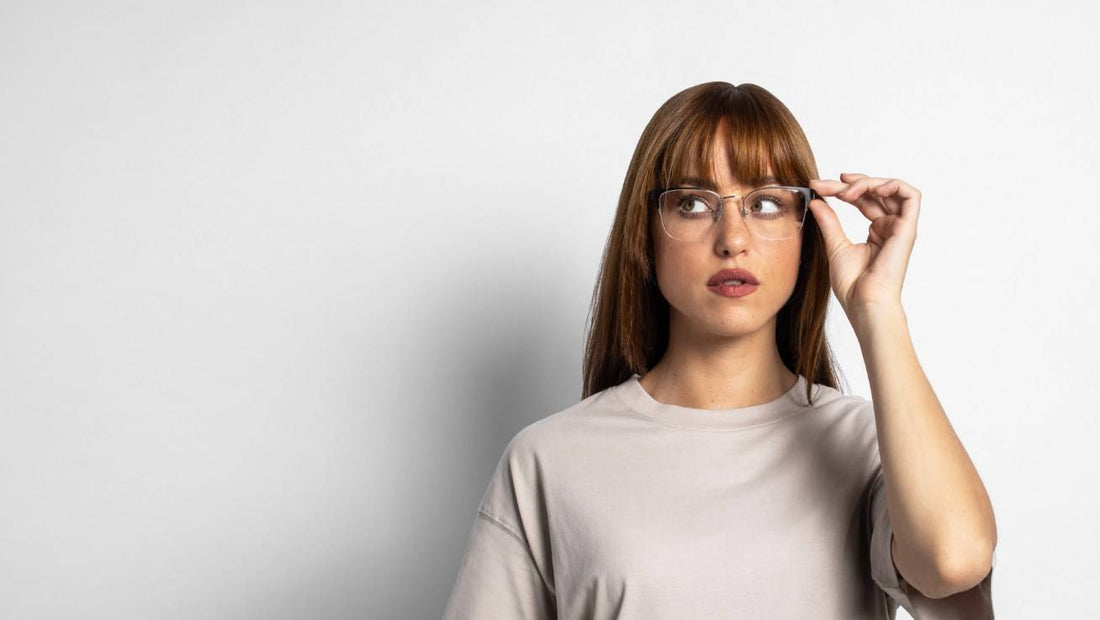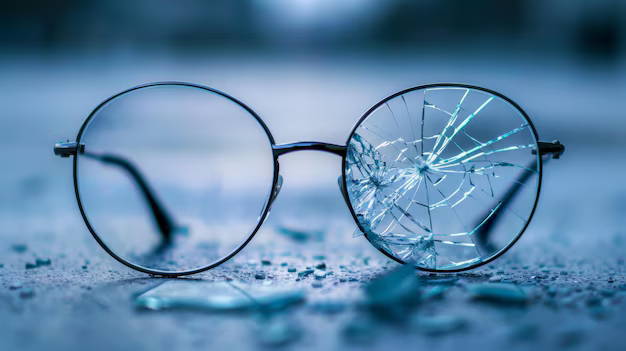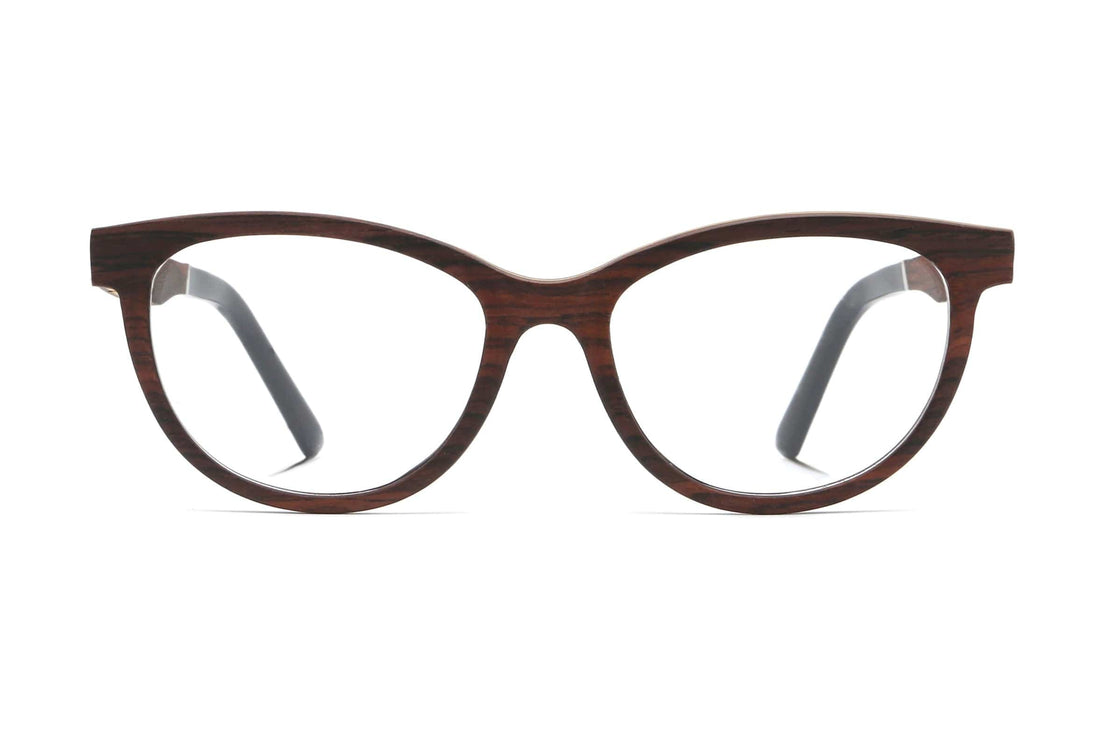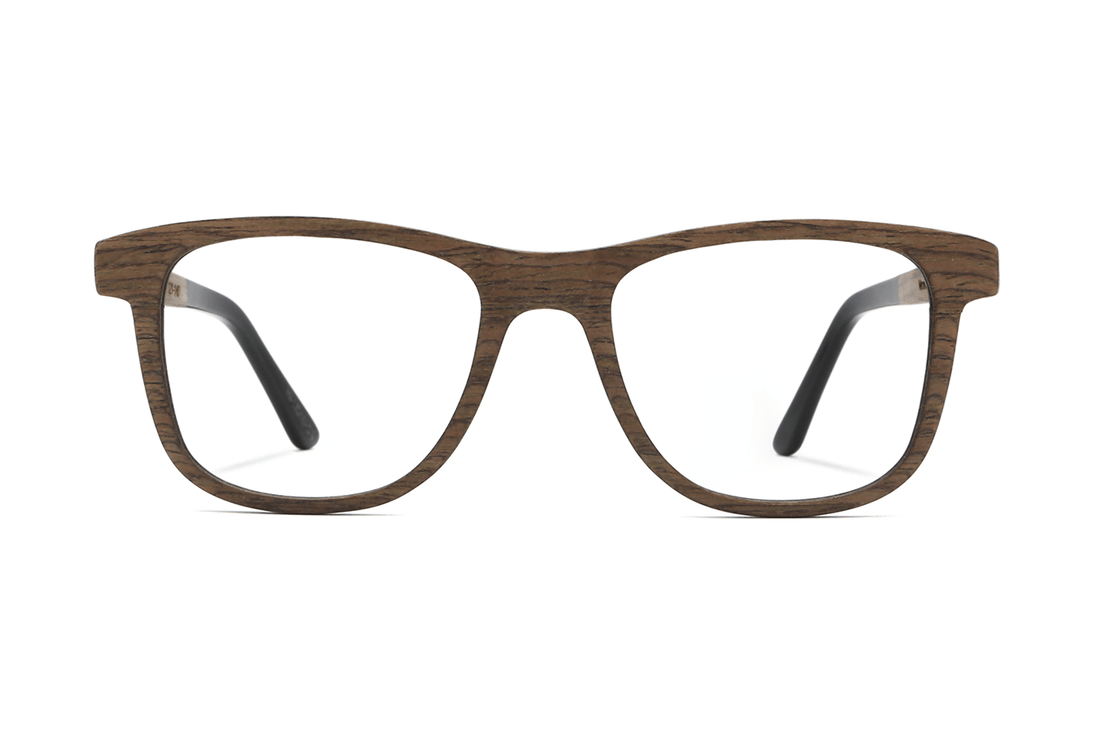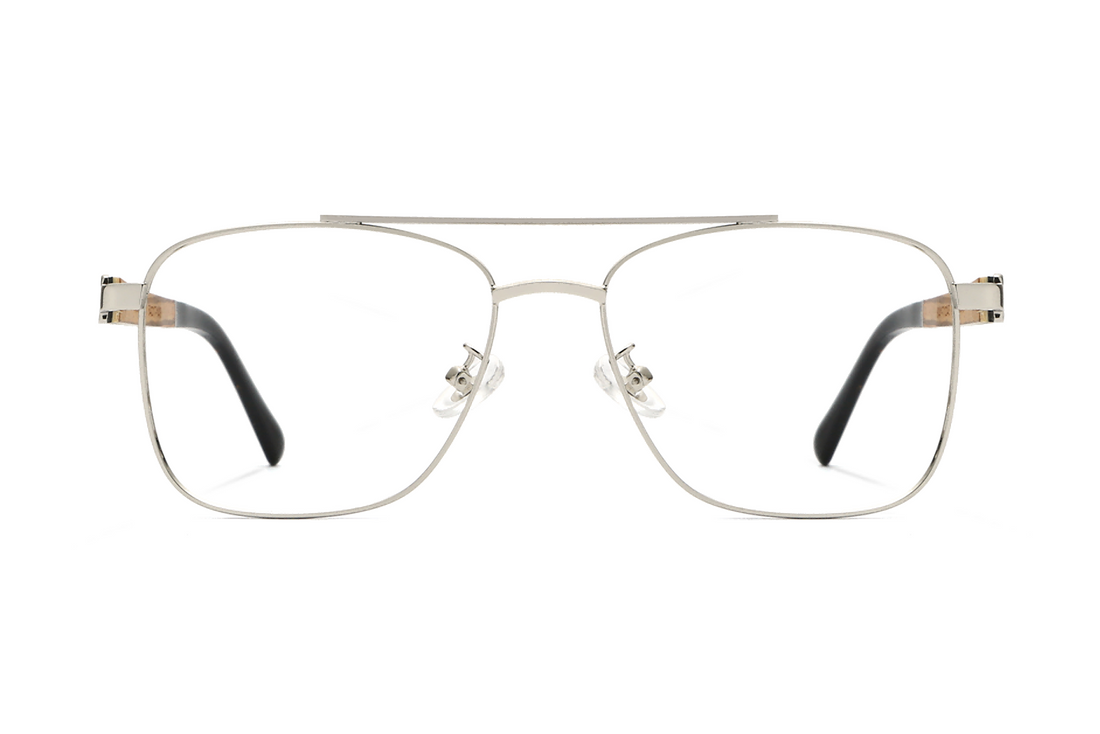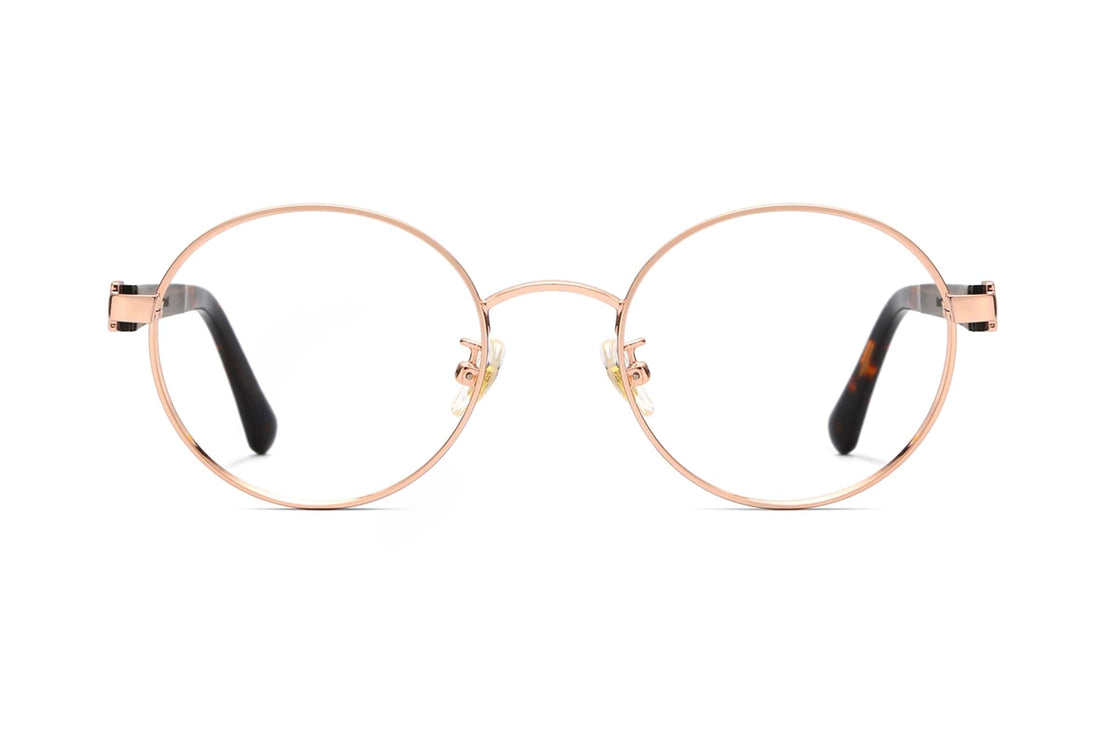
Do Blue Light Glasses Work? Benefits of Blue Blocking Glasses
Do Blue Light Glasses Work?
Updated 8 June 2024 • Heba from Kraywoods
Most of us adults are either working from home, in an office or scrolling through our mobile phones. In all cases, we're spending too much time online. So, our eyes are getting exposed to screens now more than ever. Have you been experiencing headaches, blurred vision or tired and dry eyes? If so, then you're in need of blue light glasses. They are designed to relieve the disturbing side effects of UV rays and blue light harmful.
With our increased use of computer screens over the years, clear blue light filter glasses have gained high popularity. So if you're looking for a pair of blue light blocking glasses to protect your eyes just like everyone else, you're in the right place! Now, buying blue blocking glasses has never been easier! We've gathered our top picks for you to browse from our wide selection of trendy and stylish blue light glasses:
- Metal Round Blue Light Glasses
- Oversized Aviator Blue Light Glasses
- Squared Aviator Blue Light Glasses
- Square Blue Light Glasses
- Oversized Cat-Eye Blue Light Glasses
What is Blue Light?
For those who are unfamiliar with the term, we can help clarify the terminology. Light comes in different coloured wavelengths such as red, green, orange, yellow and blue. Each wavelength has its own energy. However, blue light is a fracture of the light wavelength that the human eye can see. It is also the highest energy in the visible light spectrum.
People may not know this, but we are constantly exposed to blue light in our everyday life. As a result, you have a higher chance of damaging your eyes coming from artificial lights, televisions, and other digital screens such as smartphones, tablets, and computer screens.
Research shows that extensive prolonged exposure may lead to age-related macular degeneration. In other words, it's a condition that affects the central part of the eye (the retina), causing blurred or loss of central vision. In addition, blue light is responsible for regulating our sleep-wake cycle. Therefore, moderate blue light exposure to blue light waves during the day is beneficial because it helps keep us awake. But, overexposure to it from digital screens, especially at night, can be harmful, causing digital eye strain, blurry vision, dry eyes, headaches, migraines and disruption and trouble falling asleep.
Why Blue Light Glasses Work: Benefits
Are blue light glasses worth it? This is a question often asked by the public, and we will leave it up to you to decide. Generally, blue light blocking glasses remove 50 to 100 percent of harmful light coming from digital screens. But, what are other benefits? These are the main ones:
- Improve your sleep: In 2019, a study by Knufinke M, Fittkau-Koch L, Møst EIS, Kompier MAJ, Nieuwenhuys was conducted on 15 healthy athletes. They were asked to follow specific guidelines as part of their nighttime routine while wearing blue light hazard glasses or transparent glasses. After being monitored for nine nights, the blue light glasses athletes showed better sleep activity. So, blue light blocking glasses can help regulate your sleep cycles and improve the quality of your sleep.
- Reduce eye strain: The Vision Council underlined the importance of wearing glasses to prevent blue light from damaging your eyes when working long hours. Although the symptoms of eye strain are temporary, wearing blue light blocking glasses can help keep the eyes more rested, relaxed and comfortable.
- Improve visual clarity: Other symptoms of eye strain from excessive blue light exposure to digital screens can be blurred vision and irritated eyes, leading to vision disruption. So, wearing blue light glasses can help you see things crystal clear.
Watch Below: Top 5 Reasons You Should Wear Blue Light Lenses
When Should You Wear Blue Light Glasses?
The average person consumes around 10 hours of screen time per day. Therefore, a doctor would recommend taking breaks, sitting outside for a while or looking out the window to rest your eyes. But, sadly, these solutions are not enough. So now you know what the next step is.
Technically speaking, there isn't really a specific time for you to wear glasses. However, one thing is for sure; computer glasses should be worn whenever you're in front of a computer screen, TV screen or while using other digital devices such as smartphones, tablets and laptops. If you're into gaming, then light sensitivity glasses are for you. We even have a guide for the best gaming glasses.
Our Top 5 Blue Light Glasses Picks
Now that you've got all the information needed, it's time to take a look at our picks of the best blue light glasses. Like other eyewear trends, the blue light lens coating glasses come in various shapes, textures, and colours. For an effective result, the blue light blocking glasses should have premium blue light blocking lenses to protect your eyes from UV rays and blue light from digital screens.
At Kraywoods, you can customize your blue light lenses with or without prescription. Our blue light glasses are available for reading too! For more details, you can check out our lens guide page. Now, without further a due, let's look at our top blue blocking lenses style picks we love:
1. Metal Round Blue Light Glasses
We're starting the list of blue light glasses on a solid note. We now know that your eyeglasses will help relieve your computer vision syndrome problems. If this is your first time getting blue light blocking glasses, we have several shapes for you. Do you see yourself going with a standard frame? If so, round glasses are a great place to start. The timeless form never seems to get out of style.There are plenty of blue light round frame glasses online. For example, the Joy collection is a combination of vintage with a touch of modern.
They're available in two colours: rose gold and silver. The former, Joy Rose Gold eyeglasses, are handmade premium stainless steel and feature authentic Ebony Wood temples.
The latter, the Joy Silver eyeglasses, are handcrafted from premium stainless steel and feature original Walnut Wood temples. As for the design, the round trendy glasses feature slim lines and an arc-shaped nose bridge for a classic, minimal finishing. In addition, rounded metal glasses can be beneficial to block blue light. Finally, their shiny gold/silver finish and standout wooden temples will give a quirky touch to your everyday style!
These blue light emitted lens coating glasses look great on rectangle, square, diamond, heart and oblong face shapes.
2. Oversized Aviator Blue Light Glasses
Since you'll be wearing your eyeglasses for a long time, you should invest in high-end materials for better durability and resistance. However, before making any decision, it's vital to find the best glasses for your face shape and personality. In addition, your frames need to compliment your lifestyle. So, what do you think about oversize aviator glasses? If you want an unmissable addition to your stylish eyewear, the Purpose collection is the way to go.
Their vintage styles look great on men and women. The Purpose Gold eyeglasses showcase a vintage feel that is great for styling any outfit.
If you're not a big fan of gold accessories than the Purpose Black eyeglasses are the perfect subsitute. These new aviator glasses are handmade from premium stainless steel and authentic Rose Wood temples. In addition, these lightweight frames are adaptable to ensure a flawless fit and maximum protection from harmful UV rays and blue light. As for the design, the vintage-inspired blue light glasses have a standout black bar and a raised nose bridge featuring an alluring gold metallic finish or a matte black monochromatic finish for a clean look.
The blue light shield glasses look suitable on oval, diamond, round, rectangle, square, oblong and heart face shapes.
3. Squared Aviator Blue Light Glasses
Moving on to our next one, many people seem to question the effectiveness of blue light blocking glasses. Can they keep my eyes safe from damaging blue light rays? To those, we say: if you never try, then you'll never know. Don't worry, though; technical glasses can be stylish too. Our priority is to follow the trends and make sure you'll stand out from the crowd. So, what do you think about geometric glasses? They can elevate your style from the first try while protecting you from the UV rays. Therefore, the Drive collection made it to the best blue light glasses list.
The Drive Gold eyeglasses are handmade from premium stainless steel and feature authentic Sandal Wood temples.
But, the Drive Silver eyeglasses are handcrafted from high-end stainless steel and feature original Zebra Wood temples. In addition, the square aviator blue light glasses are designed with a straight top bar and a raised nose bridge featuring a monochromatic gold or silver finish for a polished look. So you can turn these must-have statement-making pieces into sophisticated blue light glasses in your eyewear collection.
The blue light glasses coating looks suitable on oval, round, heart and diamond face shapes.
4. Square Blue Light Glasses
Are the blue overhead lights from your mobile phone causing your head to ache? We're here to help you with that part by introducing you to a different kind of blue light glasses made with superior materials. So, if you happen to like square glasses, you should stick around. Fashion, including eyewear, stops for no one. You'll have to keep your eyes focused the latest trends in order to stand out from the crowd.
In the case of the blue light glasses, the key is the Brave collection made from premium material: Wood. They're available in two colours: rose and brown. First, the Brave Rose eyeglasses are handmade with authentic Rose Wood and are equipped with an aluminum core for extra resistance and durability.
Moving on to the second, the Brave Brown eyeglasses are handcrafted from the original Walnut Wood and are equipped with an aluminum core for extra resistance and durability.
The trendy square glasses have slightly rounded edges and a saddle bridge for a sophisticated look. They're lightweight and can quickly boost your confidence. You can add blue light blocking lenses to cast away any eye health problems.
These two-tone blue light glasses look great on oval, round, heart and diamond face shapes.
5. Oversized Cat-Eye Blue Light Glasses
Our last pick of blue light glasses goes out to all the women looking to update their eyewear collection. As mentioned earlier, wooden eyeglasses are now the IT thing. So you'll be helping out the environment while looking more fabulous than ever. So, if you liked our previous round glasses in metal, you'll love our entire wood Charm collection even more.
We like to give you options which is why they're available in two colours. Starting with the Charm Rose eyeglasses, they're handcrafted from authentic Cherry Wood, a subdued shade of red that complements many skintones.
The Charm Purple eyeglasses are darker as they are handmade from original Sandal Wood. Both wooden prescription eyeglasses are equipped with an aluminum core for extra resistance and durability. So, what about the design?
The blue light glasses have an upswept oversized cat-eye silhouette with rounded edges and subtly winged tips for a bold, chic and feminine look. These lightweight frames are comfortable and have a flawless fit. In addition, you can stylishly protect your eyes now from digital screens by getting clear blue light filter lenses.
The round cat-eye glasses look amazing on round, oval, square, rectangle, heart and oblong face shapes.
Do you see yourself picking up a blue light glasses frame? We've done our part; the ball is in your hands now! Our trendy prescription glasses will complement any outfit you decide to put on. Also, they'll elevate your style and upgrade your fashion sense to a whole new level! In addition, you can accessorize your blue light glasses with one of the latest eyewear trends: glasses chains! Since you might be putting your glasses on and off when working, a glasses chain will not only be stylish, but also very practical! We'll be looking forward to seeing you shine in your statement-making blue light glasses pieces.











